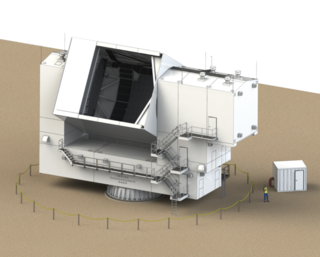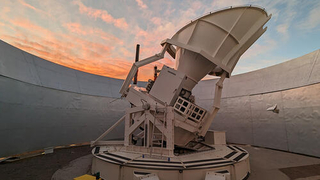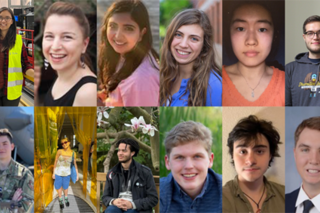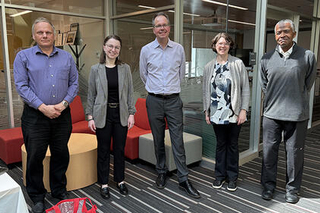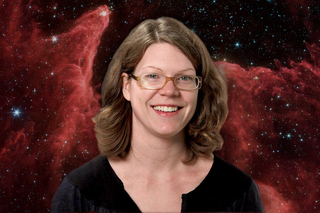Biographical Sketch:
Laura Newburgh is an Assistant Professor of Physics at Yale University. She received her Ph.D. in physics from Columbia University on her work building, characterizing, deploying, and analyzing data on the polarized CMB experiment QUIET. She worked on low-temperature detector characterization, integration, and deployment for polarized CMB experiment ACTPol as a postdoc at Princeton University, and began working on novel methods of calibration for the 21cm experiment CHIME as a postdoctoral fellow at the University of Toronto. Her work spans hardware, software, and analysis for CMB and 21cm cosmology through her current projects CHIME, HIRAX, Simons Observatory, and CMB-S4.
Research:
Laura Newburgh studies the past 13 billion years of cosmic history through measurements of the Cosmic Microwave Background (CMB) and 21 cm hydrogen emission from faraway galaxies. Her work involves designing, building, and using instruments that go on radio telescopes around the world. The data from these instruments enable her to probe the nature of dark energy, dark matter, neutrinos, and cosmic inflation.
Education:
Ph.D., Columbia University, 2010
Honors & Awards:
Newburgh received a National Science Foundation (NSF) CAREER award in 2018. With CHIME collaborators, she shared both the 2022 Berkeley Prize for breakthroughs in understanding Fast Radio Bursts (FRBs) and the 2024 Buchalter Cosmology Prize for measuring the clustering of hydrogen gas over a large region of the observable Universe.
Selected Publications:
- CHIME/FRB Collaboration, A Second Source of Repeating Fast Radio Bursts, Nature, Volume 566, Issue 7743
- CHIME/FRB Collaboration, First Detection of Fast Radio Bursts between 400 and 800 MHz by CHIME/FRB, Astronomer’s Telegram #11901
- Louis et al, The Atacama Cosmology Telescope: Two-Season ACTPol Spectra and Parameters, ArXiv
- Newburgh et al, HIRAX: A Probe of Dark Energy and Radio Transients, Proc. SPIE, ArXiv
- Berger et al, Holographic Beam Mapping of the CHIME Pathfinder Array, Proc. SPIE , ArXiv
- Newburgh et al, Calibrating CHIME, A New Radio Interferometer to Probe Dark Energy, Proc. SPIE, 2014, ArXiv

